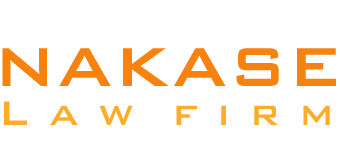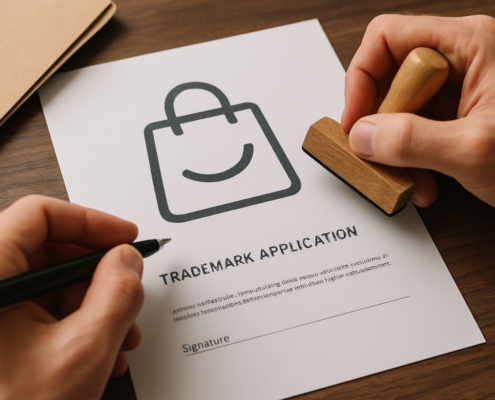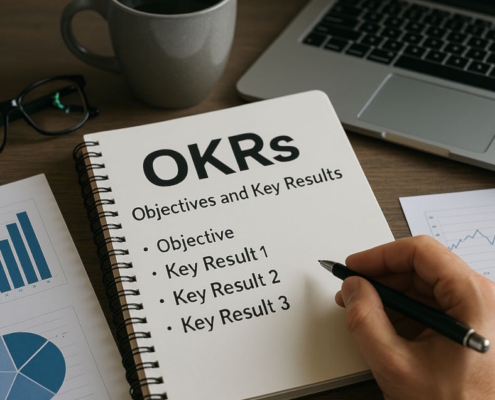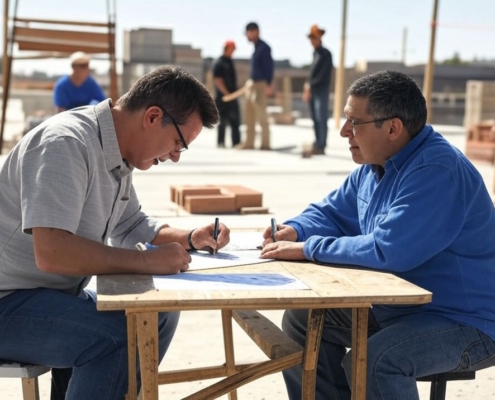How Does Straight-Line Depreciation Work?
One method of keeping track of financial assets is depreciation, which involves dividing the initial investment in fixed assets like property and equipment by the expected lifespan of those assets. Ultimately, this helps a company get a clearer view of its profitability by allowing it to recognize expenses in line with the revenue they support.
Thus, depreciation is more concerned with the distribution of costs than the valuation of assets. The most popular GAAP-compliant depreciation method is the straight-line method because it provides the quickest and easiest approach to estimating an asset’s worth over its useful life. However, there are other, more complex approaches.
As its name implies, straight-line depreciation divides an asset’s cost into equal installments over the asset’s “useful life.” The calculation only needs three inputs: the cost of the asset, its useful life, and its estimated salvage value, which is its likely worth when its useful life ends. Another crucial concept to grasp is the “depreciable base,” or the gap between the asset’s purchase price and its eventual resale value.
The yearly depreciation expense is determined by dividing the depreciable base by the estimated useful life of the asset. The asset’s book value is reduced until it reaches its salvage value by uniformly charging this depreciation amount in each accounting period.
Companies and organizations often utilize straight-line depreciation when they need to calculate the worth of an asset over a long period of time. Organizations often resort to this straightforward method when calculating the depreciation value of their assets does not necessitate a more intricate depreciation method. It’s also a part of the accounting equation for depreciating an asset on the income statement. Whenever the monetary benefits of an asset cannot be reliably estimated or correlated with its expected lifetime, this technique is often applied.
In the business world, fixed assets are resources that are expected to last for more than a year, and typically for several years. Examples of fixed assets include buildings, machinery, and equipment. These items usually have a high initial cost, and depreciation helps to spread out that cost over the useful life of the item. Because of this, a company’s cash balance and profitability won’t experience the wildly fluctuating swings that can result from spending everything at once. Since it presupposes a constant loss in usefulness from period to period, the simplest way to compute depreciation is with straight-line depreciation.
When a business uses straight-line depreciation, the income statement shows an increase in depreciation expense, while the balance sheet shows an increase in accumulated depreciation. Netting the asset and contra asset accounts against each other, accumulated depreciation reduces the book value of a fixed asset because it is a contra asset account (the balance is actually a credit balance).
Why is it important to use straight-line depreciation?
The overall profitability of a business can be more precisely assessed through the use of depreciation, which helps to align expenditures with revenues. For budgeting and financial forecasting purposes, the straight-line method of depreciation is preferable since it produces consistent and uniform depreciation charges. Since the consistent charges are easy to spot and eliminate, they also help with operational profitability and cash flow analysis.
Different Approaches to Depreciation
There are a number of additional depreciation methods that accountants might use besides straight line. Example: activity-based approaches, which don’t depend on the passage of time but on the use of an asset, produce variable depreciation charges. Assuming that an asset’s service value drops the most in its early years of use, decreasing-charge methods speed up the depreciation process in those years. These alternative depreciation methods include, among others:
The units-of-production method identifies an asset’s useful life by calculating its expected output. It is an activity-based depreciation technique. To find the depreciation charges, take the number of units produced in a specific time period and divide it by the total expected units produced over the useful life. Then, multiply that number by the depreciable base.
By using a smaller and smaller percentage of the depreciable base each year, the sum of the years’ digits technique reduces depreciation charges over time. The fraction’s numerator is the remaining useful life of an asset, and the denominator is the total of all the digits in that life. For an asset with a five-year life, for instance, the denominator would be 15 (5+4+3+2+1=).
The declining-balance method generates higher depreciation charges in the early years of an asset’s useful life and lower charges toward the end by applying a consistent depreciation rate to the declining net asset balance. Another variation of this method is double-declining balance, which, as the name suggests, doubles the depreciation rate, leading to significantly accelerated depreciation charges.
In contrast to GAAP-compliant methods, which depreciate assets to zero instead of their salvage value, the modified accelerated cost recovery system, or MACRS, is necessary for US tax purposes. The IRS has specified life expectancies for various asset classes.
Applicability of Straight-Line Depreciation
The goal of accounting is to determine which form of depreciation is most appropriate for a given fixed asset. While various forms of fixed assets may call for different approaches to depreciation, businesses should be consistent in their application. The simplicity, lack of administrative burden, and reduced likelihood of error associated with straight-line depreciation make it a popular default.
Despite its apparent simplicity, straight-line depreciation is frequently the best method for calculating the lifespan of a fixed asset. The straight-line depreciation method is suitable for fixed assets whose obsolescence is purely attributable to the passage of time. Fixed assets, such as furniture and fixtures, inevitably depreciate with time.
When an asset’s economic usefulness remains constant over time, like a storage facility, straight-line depreciation makes sense. Additionally, the straight-line method might be the way to go if the income that a fixed asset produces remains constant throughout its useful life, like in the case of a building that a landlord owns for rental purposes.
Intangible assets like patents, trademarks, and copyrights have specific useful lives and can be treated similarly to tangible assets with straight-line amortization. Amortization, in contrast to straight-line depreciation, calculates the full value of an intangible asset and typically does not take salvage value into account.
Which figures are part of the straight-line depreciation calculation?
Asset cost, salvage value, and useful life are the three variables that make up straight-line depreciation, and each of these factors has its own unique considerations. To divide up costs in a logical and organized way, you need to use estimates and your own judgment.
- Purchase cost: The purchase price is a factual piece of information. In addition to the asset’s purchase price, there are additional labor and material costs associated with putting it into service, including shipping, setup, and modification.
- Scrap or salvage value: This is a ballpark figure for the potential profit from selling or scrapping the asset once it is no longer needed. Because no other reasonable estimate is available, many businesses will simply set this estimate to zero. Sometimes, it helps to look back at previous experiences or consult resale industry guides.
- Useful life: An additional estimate that indicates how long the asset is anticipated to remain in service. In contrast to its physical life, an asset’s useful life is the amount of time it takes for it to carry out its designated function as intended. Some machinery may still have some physical life left, but it becomes less useful due to the high costs of repairs and maintenance or decreased operational efficiency. When estimating the lifespan of a fixed asset, accountants often consult external sources, historical data, or IRS tax tables.
Formula for Straight-Line Depreciation
For every accounting period, the annual depreciation expense can be reliably calculated using the straight-line depreciation formula. When using the straight-line method to determine yearly depreciation expense, the formula is:
Annual depreciation expense = (cost – salvage value) / useful life
Methods for Determining Straight-Line Depreciation
The three pieces of information needed to calculate straight-line depreciation are the asset’s cost, useful life, and salvage value. To be clear, two of the three are estimations and one is based on actual data.
Here is what you need to do:
- Add up all of the expenses associated with purchasing and implementing the fixed asset’s use to get its total cost.
- You should try to guess how long the asset will be usable, or how long it will remain in service.
- Find out how much you can get your money out of the asset when its useful life is over, also known as its salvage value.
You can figure out your yearly depreciation expense using the conventional straight-line depreciation formula, as provided.
- Optional: You can calculate the depreciation expense for each month by dividing the annual expense by 12.
- Optional: You can estimate the annual depreciation rate by dividing 1 by the useful life. A five-year plan, for instance, would be one-fifth of a percent, or 20% annually. After that, take the depreciable base and multiply it by the annual depreciation rate.
Straight-Line Depreciation Examples
Take a look at this straight-line depreciation example. Grocery Inc. bought a new delivery truck for a total of $100,000. The company paid in cash and expects the truck to last five years according to its previous experience. After five years, the company predicts that the delivery truck will have a salvage value of approximately $15,000 based on data from a reliable vehicle-pricing guide, as well as estimates for future condition and mileage.
According to the straight-line method’s calculation of (cost – salvage value) / useful life, Grocery Inc.’s yearly depreciation expense is $17,000 [($100,000 – $15,000) / 5].
Advantages of applying straight-line depreciation
If your company uses the straight-line depreciation method, there are a few major benefits. Among these benefits are:
- Savings on taxes: Frequently, legislation is passed by Congress that permits businesses to utilize more expedited depreciation methods when filing their tax returns. Because of this, assets might seem to have a higher intrinsic value than they actually do. Therefore, companies can accelerate the depreciation of assets on their tax returns and take advantage of an upfront tax deduction.
- Useful and simple: Over the lifetime of an asset, this method produces fewer mistakes and is among the easiest ways to compute depreciation expenses.
- Use of few variables: Due to its simplicity and reliance on just three variables—the asset’s purchase price, salvage value, and useful life span—the straight-line depreciation method is often chosen for estimating depreciation costs.
Downsides of the Straight-Line Depreciation Method
Some potential drawbacks of the straight-line depreciation method are as follows:
- Calculations are based on estimates: When you use the straight-line depreciation method, the useful life calculation is based on a guess, which is not ideal. This means that it doesn’t take into consideration anything that could compromise the asset’s value or extend its lifespan.
- There is no consideration for accelerated loss in the short term: Another possible problem with the straight-line method is that it doesn’t account for how quickly an asset’s value drops over a shorter period of time. Another thing this formula misses is the possibility that the asset’s maintenance costs will go up with time.
- Accounting records and tax records might not be the same: Accounting records and tax records can differ if a company files its taxes using the legally permissible accelerated depreciation methods. In this case, a company can file a 10-K to make special changes to its accounting reports.
In summary
The simplicity and reduced error rate of the straight-line depreciation method over the lifetime of an asset make it a popular choice among accountants. Accountants implement a variety of conventions, including straight-line depreciation, to align sales and expenses within a specific time frame.






























